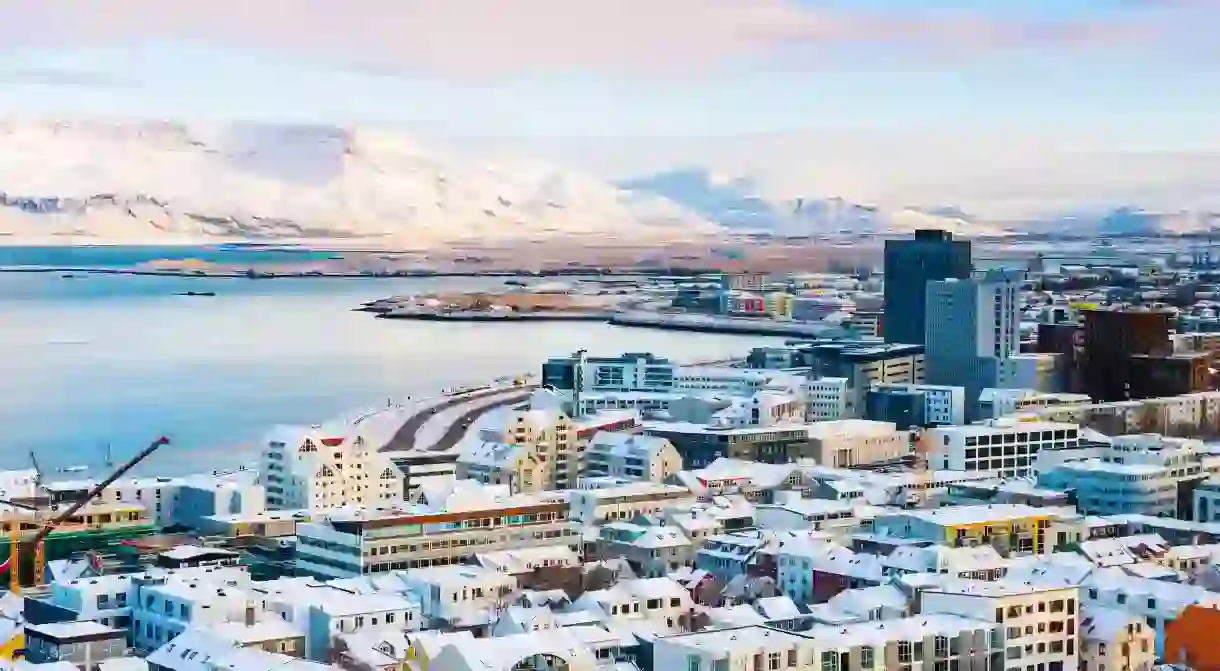Top Tips for Travelling to Reykjavik

Despite its small size, Reykjavik is an ideal city to visit, whether you are looking to party, explore spectacular landscapes or simply be outdoors in a peaceful environment. However, a visit to the Icelandic capital can feel overwhelming if you don’t know where to start.
Decide when to go
Reykjavik can feel like a different city depending on the time of year you visit. Thanks to the city’s unpredictable weather, different months offer quite different experiences. If seeing the Northern Lights or visiting ice caves is on the top of your list, be sure to visit around the winter months. If hiking in 24-hour sunlight and puffin watching sound more appealing, you’ll want to visit between June and August.

Beware of the unpredictable weather
You never know what you’re going to get with the Icelandic weather. In fact, locals often say, if you don’t like the weather, wait five minutes and it will change. So to be on the safe side, make sure you’ve packed for wind, snow and rain, regardless of the current weather. Though it’s considered to be a good day when the temperature hits 15C (59F), you might still want to wear a few extra layers and leave your umbrella at home, as the wind makes it impossible to use. Instead, bring waterproof clothing and a woolly hat.

Remember the Northern Lights are elusive
Many people visit Iceland purely for the chance to see the Northern Lights. However, as they are a natural phenomenon, there’s no guarantee that you will be able to catch the spectacle, as it doesn’t appear every night. The best time of year to spot the Northern Lights is between September and March, and usually between the hours of 9pm and 2am. Some hotels offer a wake-up service to make sure you don’t miss anything while you’re sleeping; think about booking accommodation on the outskirts of Reykjavik, to ensure your view isn’t obstructed by street-light pollution.

Stay up and sleep in late
During the months of 24-hour sunlight, Icelanders stay up past midnight, and you often hear children playing outside in the early hours of the morning. However, come winter, the city turns into a ghost town in the morning, as it’s usually dark until around 11am. If you’re planning on dancing the night away, bear in mind that locals tend to start the night off by drinking at home and generally don’t stumble into bars before 11pm.

Card is king
Iceland is very expensive, which means you’ll have to save up for your trip. Don’t feel that you have to exchange all your money before your visit, as you can pay for everything with credit and debit cards, but do watch out for the charges.

Take a tour
Guided tours are a fantastic way to make the most of a short visit, with many companies cramming a lot into one day. “It‘s hard to recommend something different to the Golden Circle (Thingvellir National Park, Geysir hot springs and Gullfoss waterfall) to first-timers, as it has proved to be a cornerstone day tour for our guests,” says Thor Olafsson of Arctic Adventures. However, as glaciers have become a hot topic, many people aim to see them on their holidays, especially when visiting the northernmost capital in the world. Olafsson says, “To get a good balance of city and scenery it is best to keep day tours shorter, unless you have much more time to spare. Go for a snowmobile ride on top of Langjökull glacier, which can be combined with touring the Golden Circle; or join a glacier hike on Solheim Glacier while touring the south coast.”
If you prefer to stay in Reykjavik, you can also join a walking tour to learn more about the city’s history. CityWalk, Reykjavik’s main tour company, offers free two-hour walking tours of the city’s different neighbourhoods and offers pickups from your location.


Drive carefully
If you want to get out of the city, hiring a car provides the ultimate flexibility. The roads are simple to navigate, but bear in mind that weather conditions can be treacherous all year round. If you want to get further off the beaten path, remember that off-roading is illegal in Iceland because the moss and plants are so delicate; once they have been damaged it can take decades for them to grow back.

Stay safe
Reykjavik is one of the safest cities in the world. The crime rate is low, and babies are often left to sleep in prams outside cafés in the street. But what Iceland lacks in dangerous criminals, it makes up for with its perilous natural environment. Frolicking in the waves or teetering on the edge of a waterfall may look great in photos, but many a tourist has been swept away into the depths of the ocean or down to the bottom of a waterfall. So take heed of any warning signs and respect the power of nature.

Alternatives to the Blue Lagoon
The Blue Lagoon is probably the ultimate bucket list activity for most visitors, but it’s incredibly pricey and can get booked up weeks or months beforehand. If you can’t bear to miss it, make sure you buy your tickets early. For a cheaper and less crowded alternative, visit the Secret Lagoon.

Get used to nudity
Icelandic culture is strict when it comes to hygiene, so expect to do a thorough naked clean before entering any public baths. Anyone wearing a swimsuit during their shower can expect to be told off by the eagle-eyed attendants. You’re in Iceland, after all, so embrace the liberated attitude and body positivity.

Everyone speaks English
It’s a breeze to get by with no knowledge of the native language, but any attempts at speaking Icelandic will endear you to the locals. Try saying “Góðan daginn” to greet people (pronounced ‘go-than di-yen’), and “Takk” for an informal thank you.

This article is an updated version of a story created by Camille Buckley.













